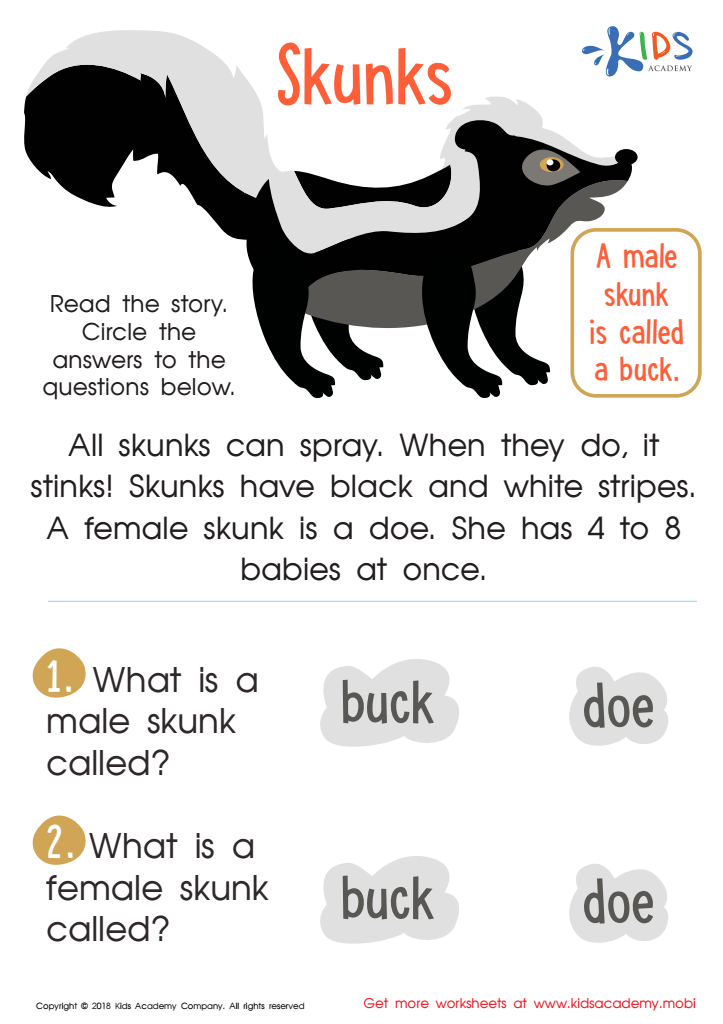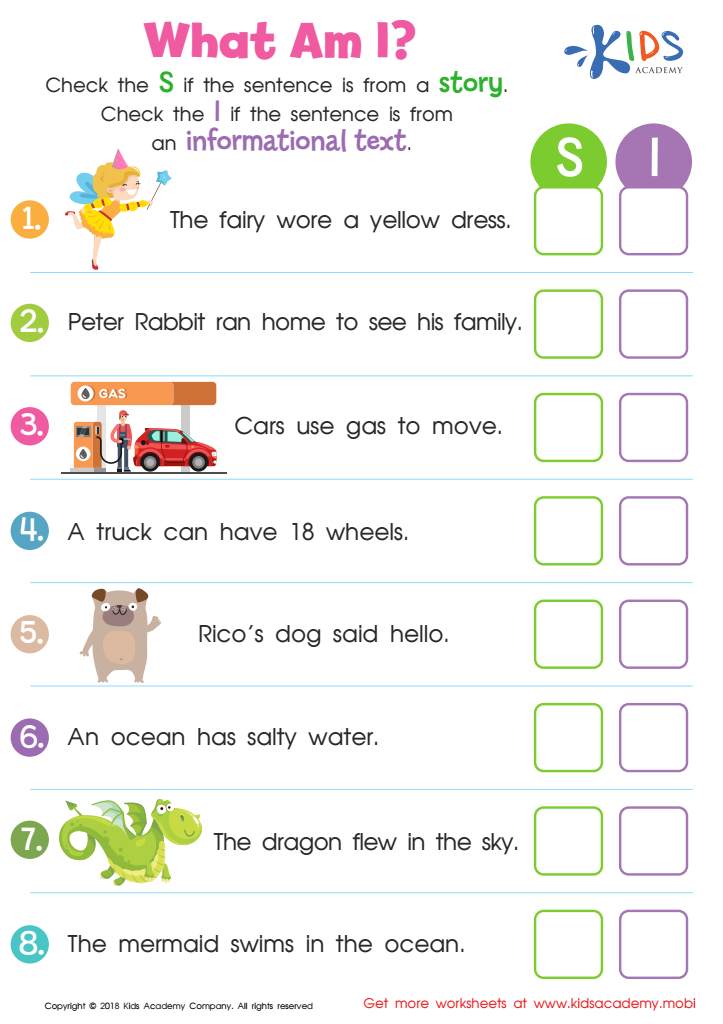Animal identification Reading Comprehension Worksheets for Ages 6-7
3 filtered results
-
From - To
Explore our engaging Animal Identification Reading Comprehension Worksheets designed specifically for children aged 6-7! These worksheets combine fun and learning, helping young readers develop their identification skills while discovering fascinating facts about various animals. Each activity includes vibrant illustrations and age-appropriate text, making reading enjoyable and interactive. Perfect for both classroom use and at-home practice, our worksheets enhance vocabulary and comprehension abilities. Foster a love for reading and nature as your child learns to recognize animals through context clues and critical thinking. Download these lively worksheets today and watch your child's reading skills soar while they explore the animal kingdom!


Skunks Worksheet


Baby Pandas Worksheet


What Am I? Worksheet
Parents and teachers should prioritize Animal Identification Reading Comprehension for children aged 6-7 because it plays a crucial role in their literacy development and understanding of the world around them. At this age, children are blossoming as independent readers, and comprehension skills are foundational in fostering their ability to grasp and retain information.
Understanding animal identification boosts vocabulary and language skills, allowing children to learn specific terms related to different species, habitats, and characteristics. This knowledge enriches their everyday conversations and interactions. Furthermore, reading about animals can spark curiosity and inspire a love for nature and science, prompting children to ask questions and seek answers, which enhances critical thinking.
Additionally, learning to identify various animals fosters empathy and respect for living beings, instilling values about biodiversity and conservation early on. Engaging with literature about animals can also deepen comprehension strategies, such as predicting, summarizing, and visualizing, ultimately contributing to better reading skills.
Moreover, this subject matter appeals to children's natural interests, encouraging enthusiastic engagement with reading. In essence, integrating animal identification into early education not only enhances literacy skills but also nurtures informed, caring individuals who appreciate the animal kingdom and strive to protect it.

 Assign to My Students
Assign to My Students



















